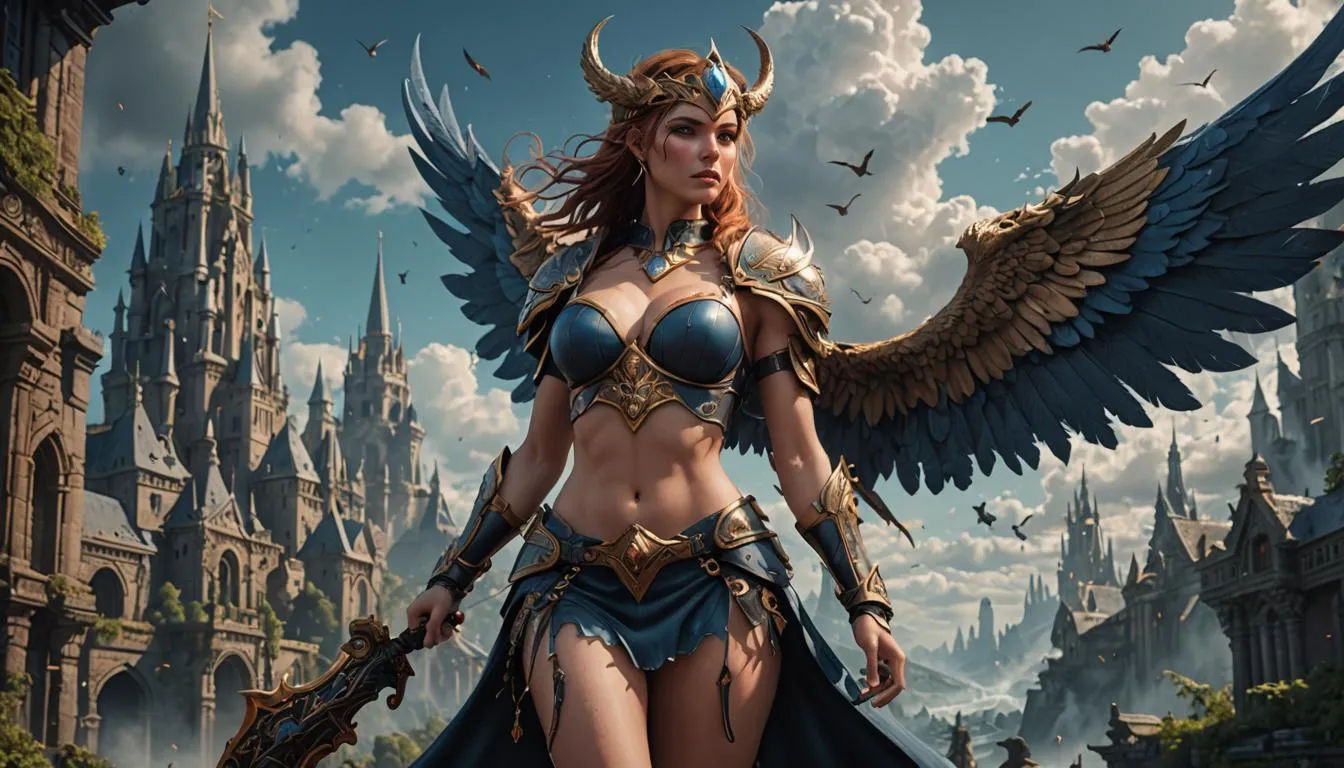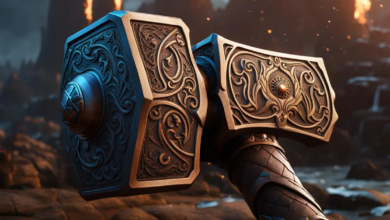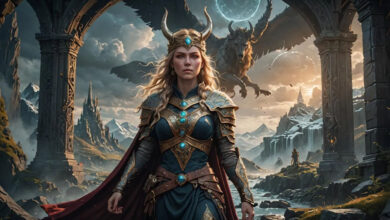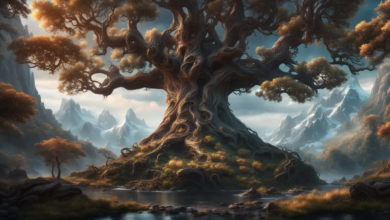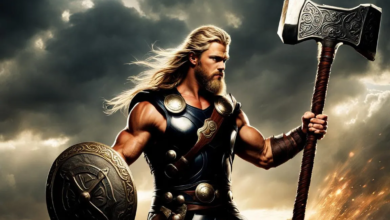Choosers of the Slain
Soaring through the skies on ethereal steeds, the Valkyries are a captivating element of Norse mythology. These warrior maidens, not to be confused with shield maidens who fought alongside men, served a crucial role in the ongoing battle between good and evil. Their duty wasn’t just combat; they were the celestial figures who decided the fate of warriors in battle, choosing the bravest to join the ranks of the fallen heroes in Odin’s magnificent hall, Valhalla.
Origins and Appearance
In Old Norse, “Valkyrie” translates roughly to “chooser of the slain.” Valkyries are often depicted as beautiful, formidable women clad in gleaming armour and helms. They rode magnificent winged horses, sometimes adorned with magical feathers that allowed them to fly through the air and across battlefields. Their presence was an omen of impending war, and their unearthly screams could strike fear into the hearts of even the bravest warriors.
Daughters of Odin: A Varied Lineage
Norse mythology offers a somewhat ambiguous picture of the Valkyries’ origins. The most common portrayal depicts them as the daughters of the Allfather, Odin, the chief god in the Norse pantheon. Some sources, however, mention them as being descended from lesser deities or even from powerful beings called Jötnar, a race of giants often associated with chaos and destruction.
The Selection Process: Choosing the Fallen for Valhalla
The Valkyries’ primary role was to select the bravest warriors who fell in battle. They would hover over the battlefield, their keen eyes scanning for those who displayed exceptional courage and bravery. The chosen warriors weren’t necessarily guaranteed victory but were deemed worthy of an afterlife in Valhalla, a majestic hall ruled by Odin.
Valkyries in Battle: Not Just Observers
Although Valkyries did not directly engage in large-scale warfare, some accounts portray them as actively participating in battles. They might use their magical spears to influence the outcome of fights, ensuring a warrior’s swift death if chosen for Valhalla. Additionally, they possessed the power to heal wounds and bestow temporary strength upon favoured warriors.
Beyond the Battlefield: A Multifaceted Role
The Valkyries weren’t solely focused on battles. They were also associated with other aspects of Norse mythology. Some sources depict them weaving the web of fate alongside the Norns, the goddesses of destiny. Others suggest they had roles in love, fertility, and even poetry.
The Fateful Love Story: Brynhildr and Sigurd
One of the most famous Valkyrie myths involves Brynhildr, a powerful Valkyrie who disobeys Odin’s orders during a battle. As punishment, she is cursed to sleep within a ring of fire until a man who knows no fear awakens her. The hero Sigurd, guided by magical wisdom, breaks through the flames and awakens Brynhildr. However, their love story is ultimately tragic, riddled with misunderstandings and manipulation, leading to their deaths.
Valkyries in Art and Literature
The image of the Valkyrie has captured the imagination of artists and writers for centuries. From Viking Age poetry like the Poetic Edda to Richard Wagner’s epic operas featuring the Valkyries, these warrior maidens have been a source of inspiration. Modern fantasy literature and popular culture depictions often portray them as formidable female warriors, echoing their fierce and independent spirit.
The Valkyrie Myth: A Reflection of Viking Culture
The Legend of the Valkyries offers a window into the beliefs and values of the Viking Age. The emphasis on bravery, warfare, and the afterlife aligns with Viking culture, where warriors held a place of high esteem. The Valkyries’s independent and powerful nature may also reflect some women’s role in Viking society, particularly as shieldmaidens.
A Legacy of Power and Enchantment
While the specifics of their origin and role vary across different accounts, the Valkyries remain a captivating force in Norse mythology. Their association with war, fate, and the afterlife adds a layer of complexity and intrigue to the rich tapestry of Norse beliefs. As fierce, independent figures who defied convention, they resonate with audiences today, symbolizing strength, bravery, and the power to choose one’s destiny.

